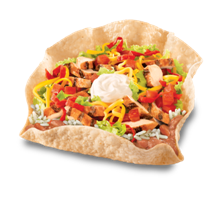Edible Cutlery – Market Analysis
Roads littered with plastic plates and spoons after a religious function or a wedding is a common site in India. According to a study by US scientists in 2017, the amount of plastic ever made amounts to 8.3 billion tonnes—as heavy as 25,000 Empire State Buildings in New York, or a billion elephants. Moreover 70 per cent of this is now waste, and have found their way to landfills or the natural environment.
To beat plastic pollution, innovators have now developed edible cutlery- plates, bowls, and spoons- to eliminate the use of disposable plastic from the food industry.
Reasons for using edible cutlery
01. Helps to beat plastic pollution
02. Encourages farmers to cultivate millets
03. Degenerates within a week
What is edible cutlery?
The edible cutlery is the cutlery made from natural food ingredients that can be either eaten or disposed in a compost pit. If you leave them in soil, they get decomposed in a week.
Why edible cutlery?
India is grappling with the issue of mounting non-degradable waste and disposable plastic plates, cups, and spoons add to it. Plastic, in any form, can have potentially harmful effects. It takes more than 400 years to degenerate. Disposable plastic plates and cups accumulate in large quantities in landfills and create an imbalance in the eco system that we live in.
Edible cutlery is a solution to this problem. It can withstand contact with water and are suitable for all climatic conditions.
Kentucky Fried Chicken (KFC) set a new trend in the food industry, two years ago, by introducing edible bowls made of tortilla. This made their ‘Rice Bowls’ very popular.

Water activity/ moisture content plays a vital role in microbial spoilage of food products. Baking edible cutlery at high temperatures and removing moisture from them helps to increase its shelf life.
Raw material and manufacturing
Edible cutlery is made mixing Jowar (Sorghum) with rice flour and wheat flour. Once all the raw material procured, the ingredients are kneaded with hot water and dough is formed. It is then baked in moulds.

Since the edible cutlery is made with flours, a product developer has the advantage of adding tastes and flavours. Indian spices can be added to the dough to make the edible cutlery appealing in taste.
The edible cutlery can be made without the use of any chemical preservatives, additives, coloring agents, raising agents, or animal ingredients. This makes them 100% natural, vegan and degradable.
What factors will influence its market growth?
Edible cutlery is made of food materials and they come with nutritive contents.
They are natural and baked products. This makes them a healthier choice for today’s health conscious consumers.
It cannot be reused. They are baked at high temperatures. Hence, the likelihood of microbial spores to survive is very little.
They are degradable. They disintegrate in less than a week.
Growing population of health conscious and environment friendly consumers will drive the growth of this segment.
Why use millets?

Depleting ground water levels is another problem faced by today’s generation. Millets use less water than rice. A lot of farmers, when not blessed with sufficient amount of rainfall, opt for chemical fertilizers to grow rice. The use of millets in the edible cutlery will encourage farmers to cultivate millets and other crops which do not require much water.

